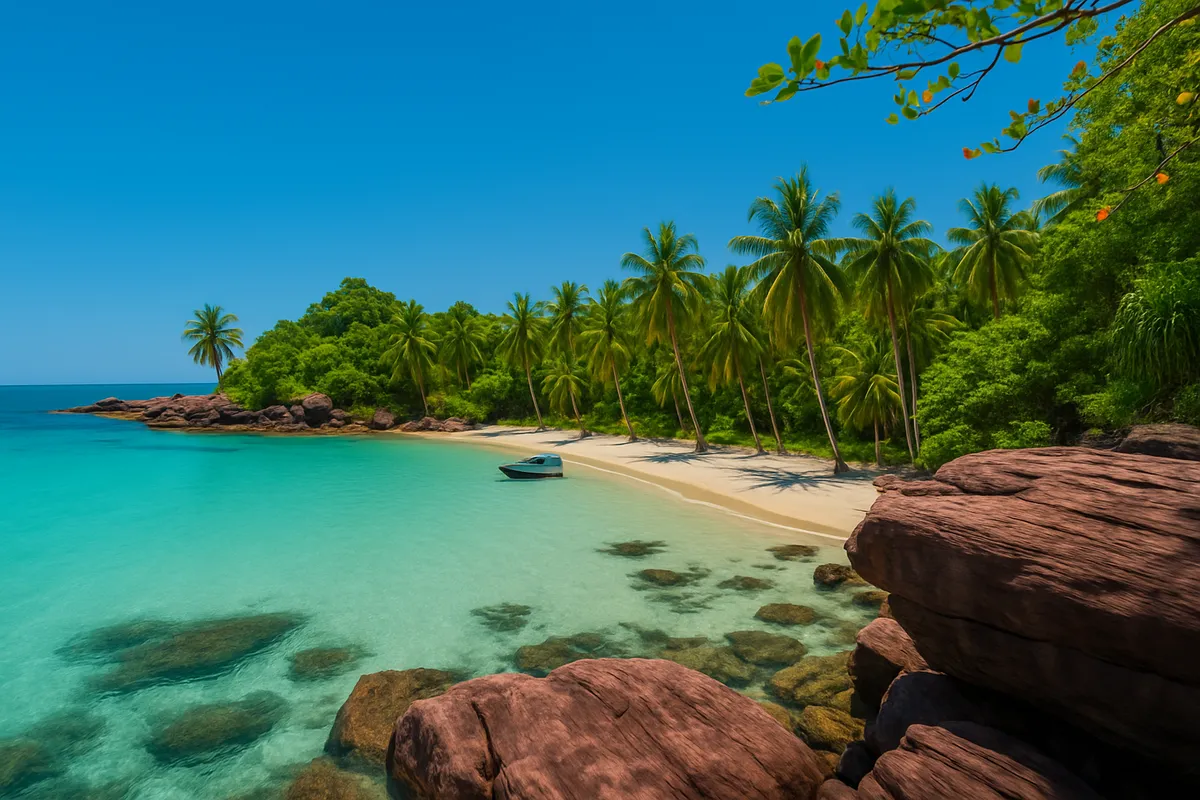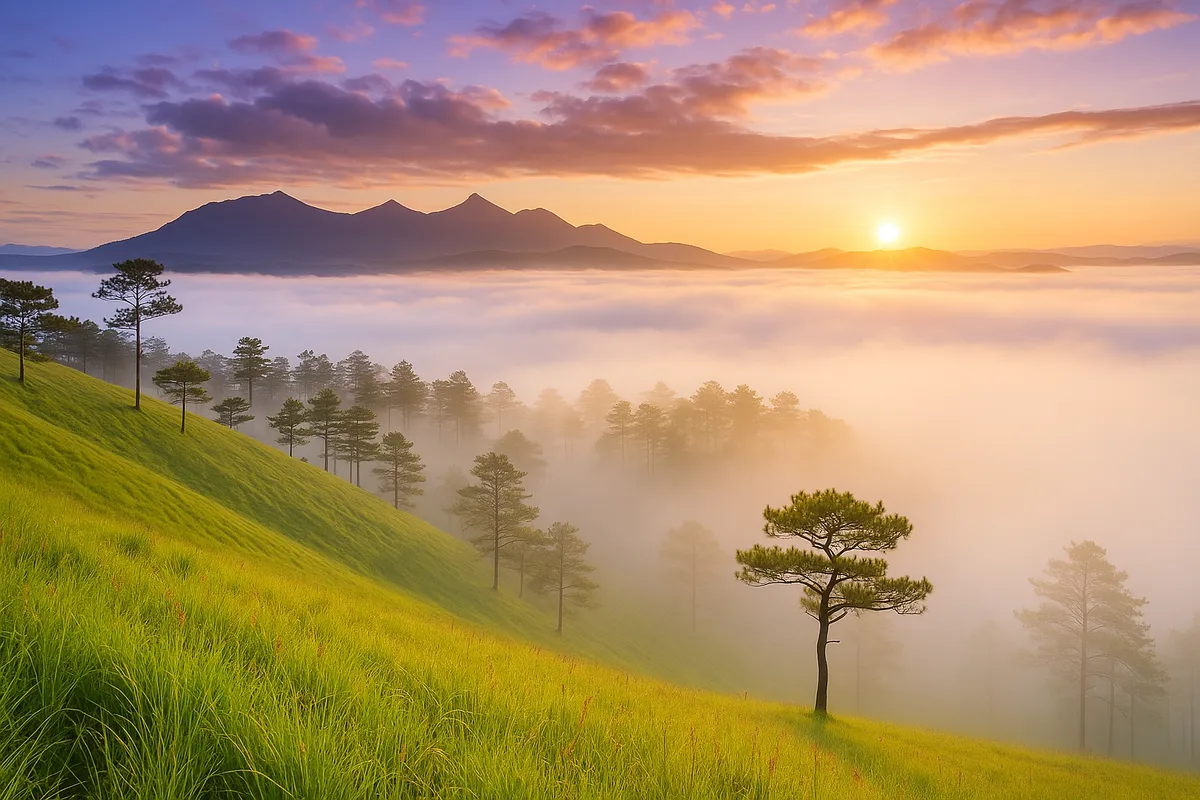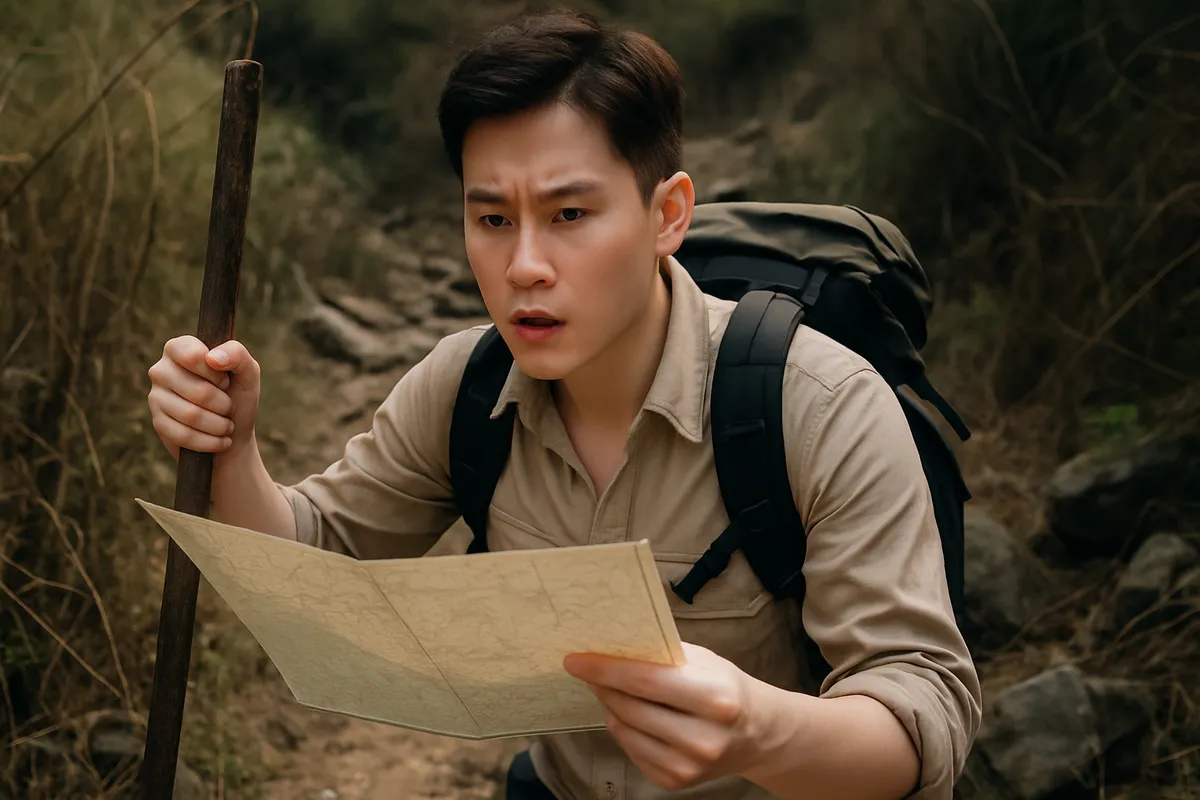Mysterious Pirate Island with traces of ancient treasure
- Wednesday, May 14, 2025, 14:39 (GMT+7)
Mysterious Pirate Island with traces of ancient treasure
Pirate Island is the name whispered by the wind, the sea, and untold dreams. Quietly resting about thirty kilometers from the mainland of Ha Tien, this strangely named archipelago unveils a world that blurs the line between reality and reverie. Here, every rock, every palm leaf, and every sound of paddles touching water seems to echo ancient stories. Stepping onto Hon Doc, the largest of the sixteen islands, marks the beginning of a slow and awakening journey where even the simplest sensations feel incredibly profound.
The sea here carries a blue unlike any other. Emerald when the sun rises, sapphire under cloudy skies, and shimmering silver as the light fades. Beneath its crystal surface lies a vibrant coral reef, where tiny fish glide among seaweed strands like living ribbons. Sunbeams pierce through the water, casting moving patterns on the sandy floor. There is no need to dive deep. Just stand at Cot Dai Rock on a clear noon, gaze into the sea, and feel yourself touching another world.
Legends of buried treasure from the untamed days of Asian seafaring cast a mist of mystery over the island. People tell of Chinese captains who raided merchant ships, hid chests of gold in caves, and drew secret maps with musk ink. Some claim to have unearthed fragments of ancient pottery, others have found rusted shells beneath the roots of sea pine trees. Yet no one has found the treasure. Perhaps that is why it still feels real, not as an object, but as the curiosity that draws people back each year.
Traces of old shovels remain on the sandy ground of Hon Tre Lon, silent witnesses to an unfinished search. Young travelers still follow hand drawn maps from locals, tracing rocky slopes and pine forests in hopes that some corner among the roots or stones will reveal a hidden sign. Even if they find nothing tangible, they return with another kind of treasure, the memory of living boldly in a land where legends still breathe.
Life on the island is simple like a coastal folk song. Children play on wooden piers by the shore, lips still sticky with homemade fish sauce. Adults weave fishing nets under coconut trees, their hands moving with the rhythm of a silent dance. An old man sits in silence on a stone bench outside his home, eyes lost in the distance where sea meets sky, where memories of an old voyage still quietly burn. The sounds here are not of engines or alerts, but waves tapping wooden hulls, wind brushing through palm leaves, and roosters crowing from behind the hills.
At night, Pirate Island becomes its own universe. There are no glowing signs or towering buildings, only a sky scattered with stars and a sea as dark as a mirror without end. Those who have camped on Bang beach often speak of waking at midnight to find the Milky Way spilling across the heavens. Some call it the most beautiful screen they have ever seen. A popular caption that accompanies such photos is often "do not zoom in, just lie still and breathe deep."
The best time to visit is during the dry season, from December to April. The sea lies still as glass, clear enough to see fish gliding beneath the pier. Speedboats depart Ha Tien every morning. Choosing a wooden boat may take longer, but it brings more poetry. It is a chance to feel each wave and listen to the sea whisper stories of what lies ahead. Do not carry too much. A light pair of sandals, a soft fabric hat, and a fully charged camera are enough to capture an entire world.
There are no ATMs or convenience stores on the island. Locals rely on solar panels and generators, often powering down at night to conserve precious energy. Yet in that absence, one learns the meaning of enough. A meal of grilled barracuda wrapped in banana leaf, sour soup made with fresh cobia, or herring salad served with wild herbs turns eating into an experience. A small seaside eatery serves only three plates of crab rice each night. Latecomers must wait until the next day. But no one complains, because this journey was never meant for the hurried.
A few secrets here make the adventure even more magical. Beneath the eastern waters of Hon Giang is a glowing trail of jellyfish, lighting the sea green like dusted stars when disturbed. A centuries old stone well believed to be the only source of freshwater for the pirates still flows today deep in the forest behind the elementary school. And near a cliff by Hon Chet, strange carvings remain, believed to be left by a gold hunting party nearly a hundred years ago, with no explanation ever given.
Morning often begins with a bike ride around Hon Doc. The road is just a few kilometers long but winds through coconut groves, cliffs, salt flats, and fishing villages. As the sun rises, the path turns golden like honey, making every frame feel like a scene from an art film. By noon, the tide recedes to reveal rocky seabeds where children hunt limpets with baskets and visitors wade barefoot, the sound of pebbles beneath their feet playing a silent welcome.
Afternoon brings cooler breezes and softer light. It is the perfect time to sit by the shore with a coconut drink in hand, eyes watching the sun slowly melt into the sea. That moment always quiets the heart, as if someone had gently touched an old memory. When night returns, the gentle sound of waves lapping the sand becomes the sea's lullaby, embracing those who once dared to leave the city behind in search of something raw and beautiful.
There is no need for grand structures or thrilling games. Pirate Island holds its essence in stories told through stone, wind, waves, and the hearts of its people. Amidst thousands of destinations rushing toward modernity, this place remains a rare fragment that still tastes of legend and holds space for those who dream. And if anyone asks where the true treasure lies, perhaps it can be seen in the sparkling eyes of a traveler holding a tiny seashell. That treasure is not buried underground, but in the moment that makes leaving feel impossible.

 CHECKIN.VN
CHECKIN.VN








Share on